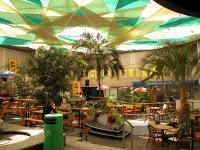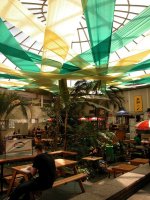
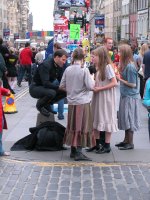
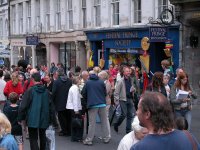
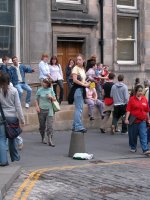
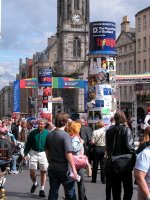

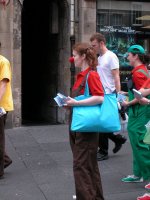
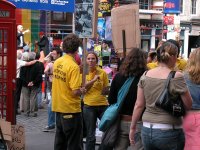
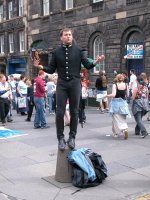
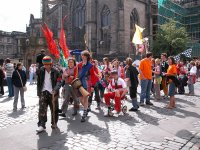
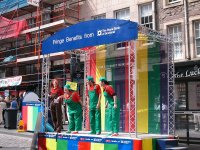
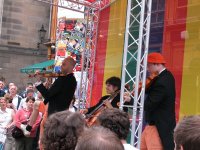
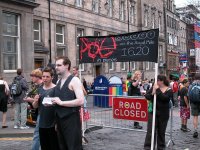


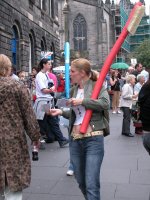
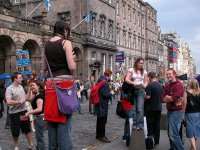
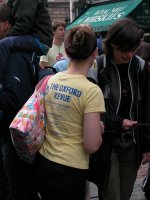


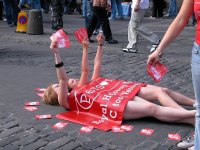
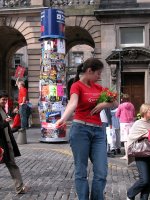
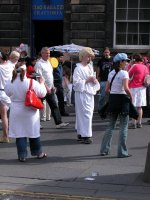
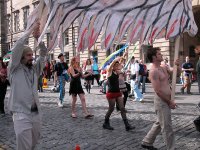

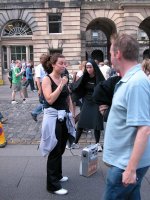
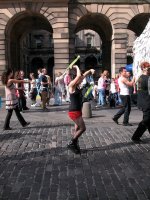

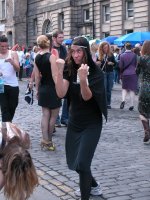
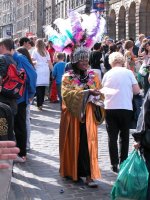
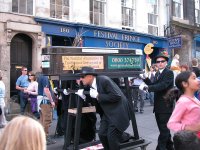
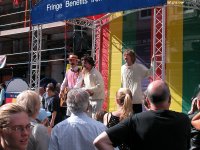
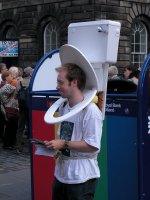
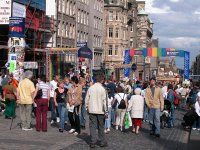
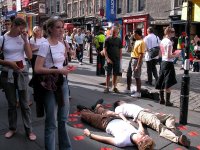

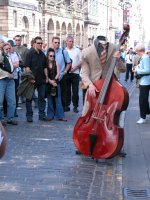
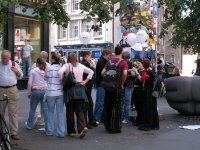

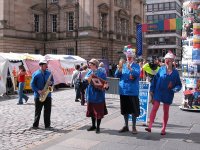
A handful of
years ago the main centre for outdoor activities was the paved area
adjacent to the Scottish National Gallery and the Royal Scottish
Academy, on the Mound just off Princes Street. It's undergone a major
remodeling during the past few years and, while outdoor perormances
still take place here, there is nothing like the atmosphere there once
was. But you will still find the usual craft stalls and face painters
here.
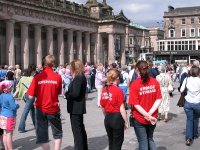
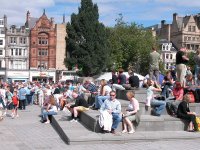
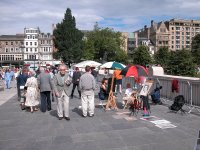
Finally on this
page, a look at some of the performance venues. The first image below
is a sad one - it's the mortal remains of the old Gilded Balloon
Theatre, part of a block of Edinburgh's Old Town that was destroyed by
fire in December 2002. The other two pictures are of the Teviot Row
headquarters of the Edinburgh University Students' Association, the
Gilded Balloon's new home during the Festival. Teviot Row features six
performance spaces, two bars and a cafeteria, and there's an adjacent
outdoor bar and food court.
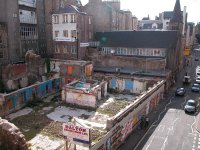
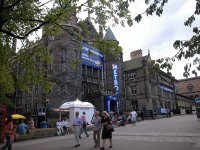
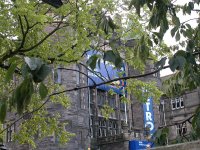
Three more
venues below. The first is the entrance to the Underbelly, a
fascinating complex of performance spaces that finds a home in a series
of disused vaults on four levels under South Bridge. In the middle is
the auditorium of the Edinburgh International Conference Centre, fitted
out for Ross Noble's show, "Noodlemeister". And on the right is Lady
Glencora's Hall, also known as the Roxburgh Theatre, which housed
Richard Demarco's "Rocket" venue in 2004 and was previously Pleasance
Over-the-Road. The blue gentlemen ascending the wall were part of an
installation that cropped up in various localities in the city centre.
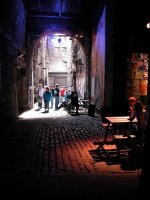

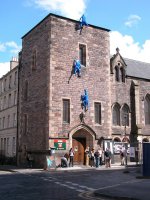
Below is the
Pleasance, my favourite venue by far, a complex of eleven performance
spaces centred around the courtyard of Edinburgh University Students'
Association's sports and societies building. From 10am to 1 am the
Pleasance Courtyard is quite simply the most happening place on the
planet, featuring audiences, performers and various media types passing
time, eating, drinking, catching the vibes and simply enjoying
themselves.

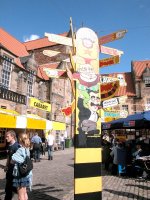
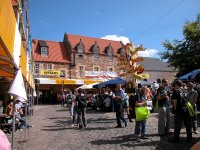
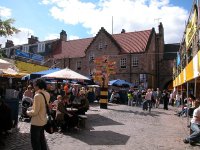
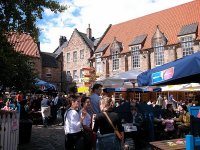
And finally on
this page we see the interior of a third Edinburgh University Students'
Association building - the Potterow centre on Bristo Square, which for
the past four years has doubled as the Pleasance Dome. The Dome features five performance
spaces, a cafeteria, a bar, a coffee shop, cash machines, and a
very useful shop that stays open until the wee small hours.
